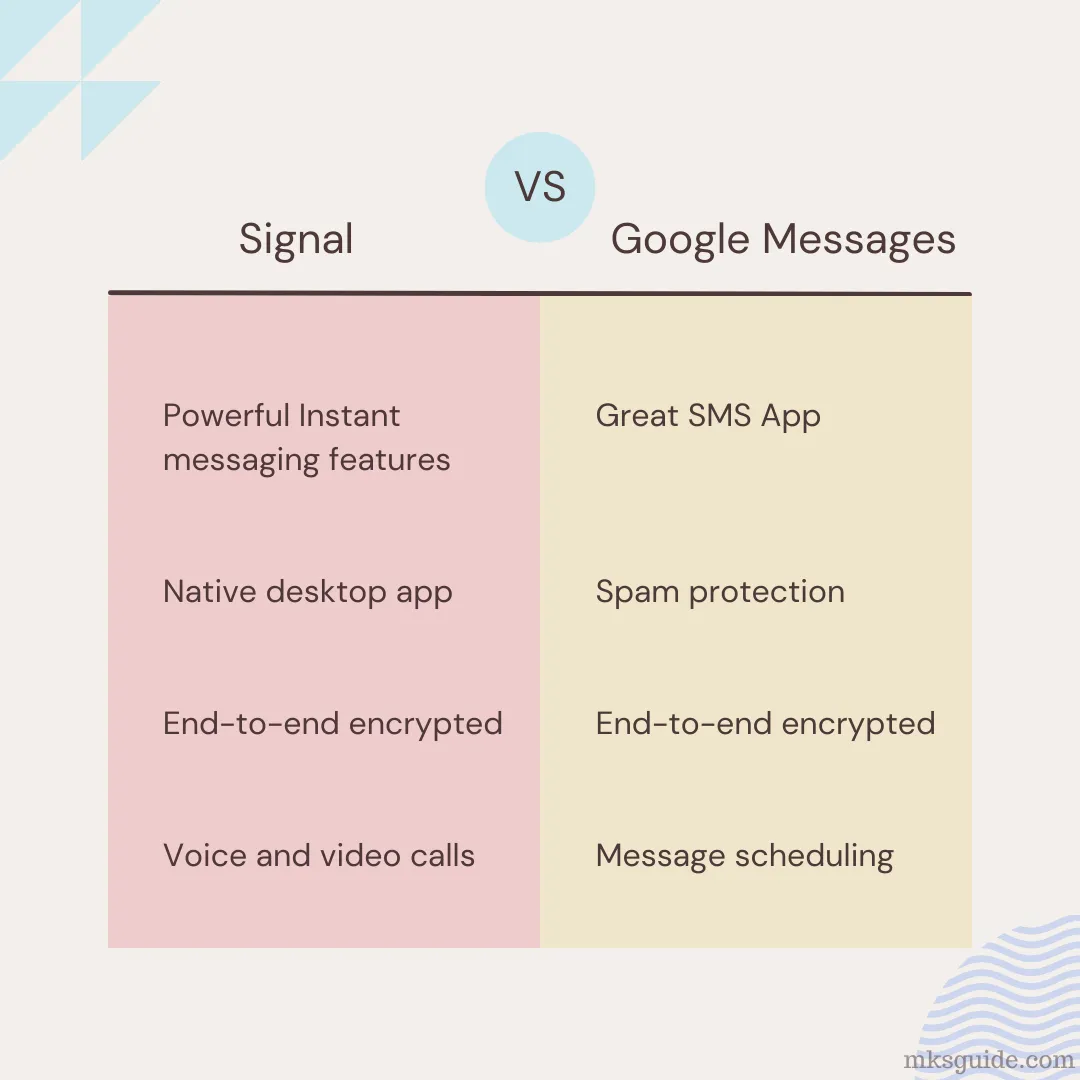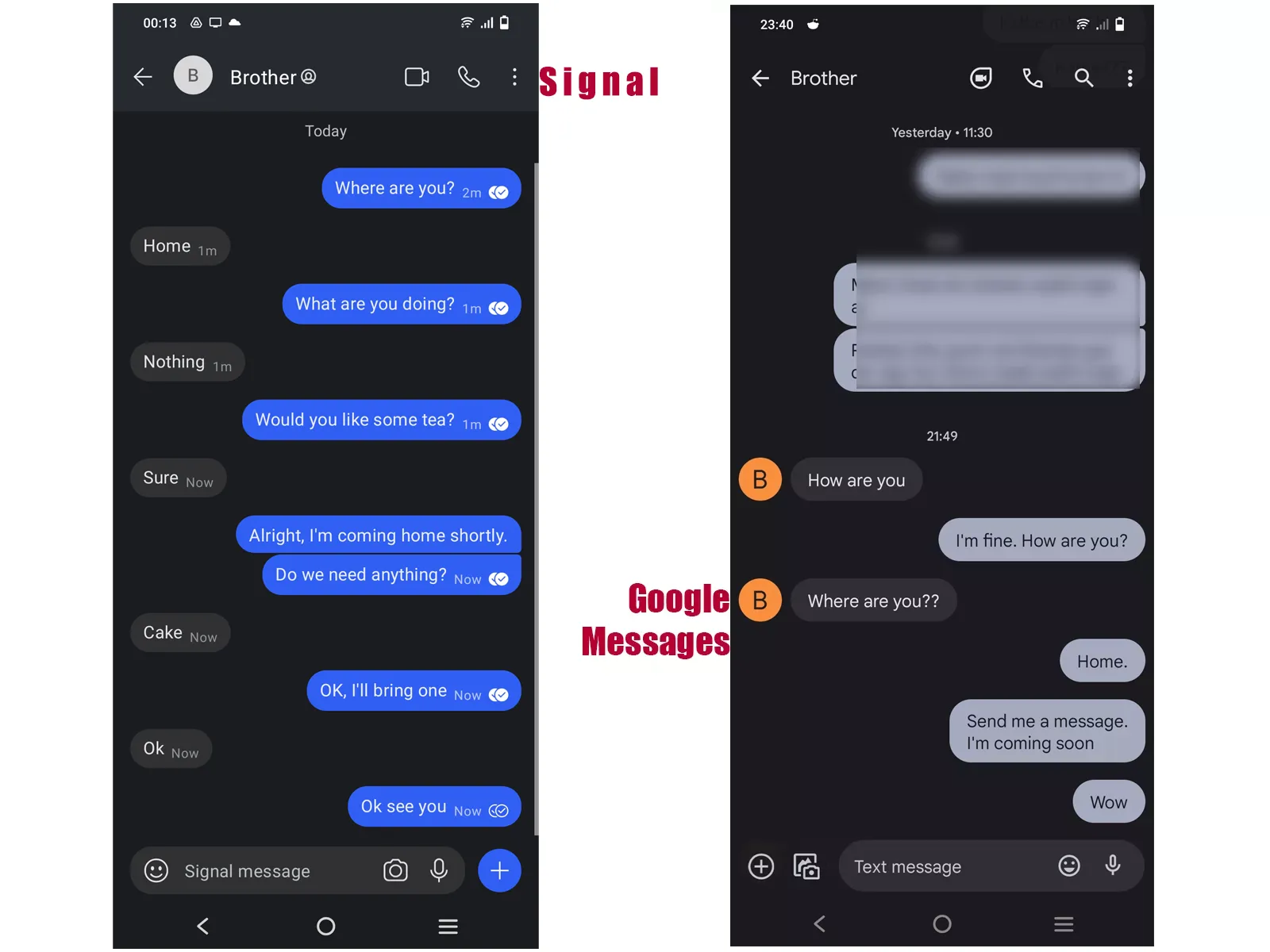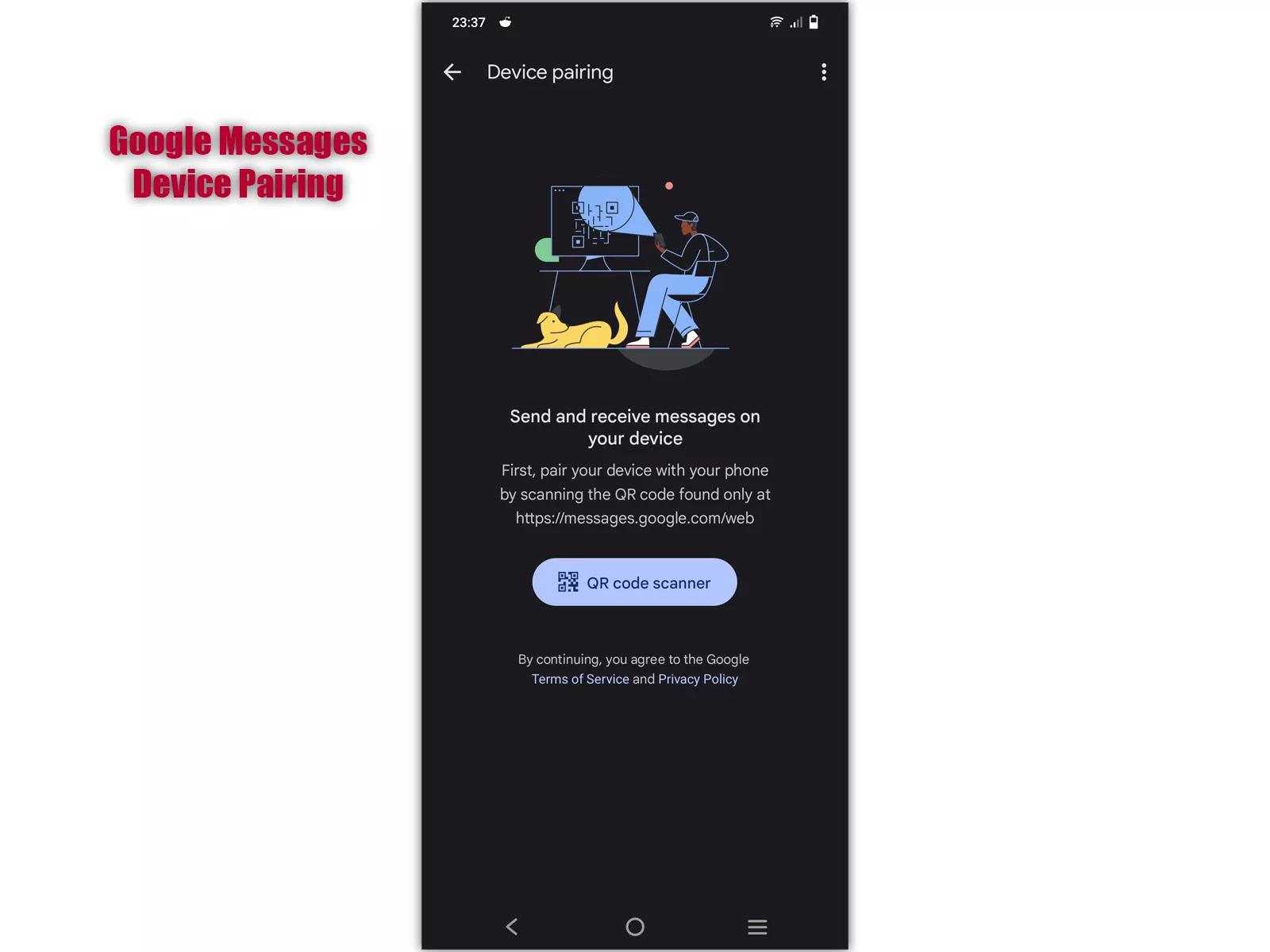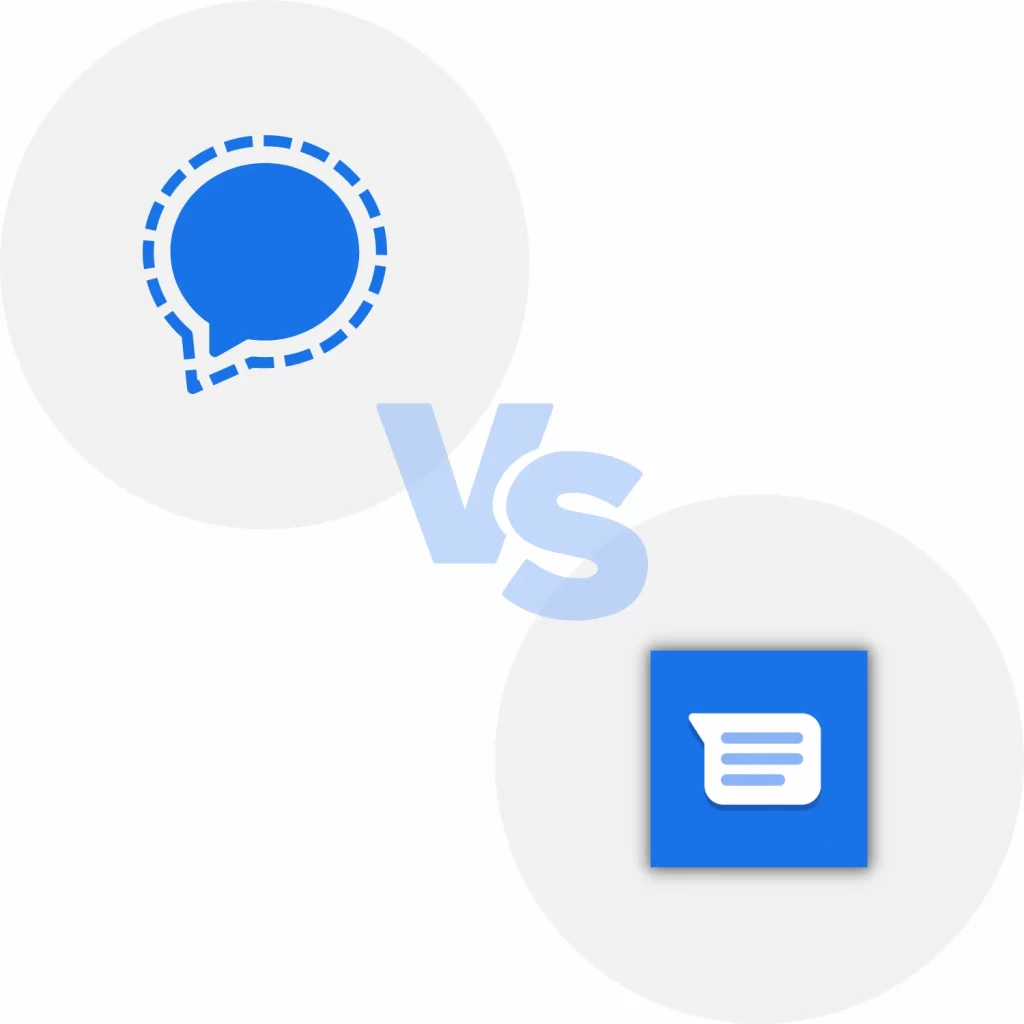Messaging has become a part of our life. Whether it’s SMS or instant messaging apps, people message more than ever.
Two of those popular apps are Signal and Google Messages. How do both differ? The article takes a ride and covers Signal vs. Google Messages.
Note: Signal no longer supports SMS.
The main difference

Signal is more powerful in instant messaging, while Google Messages is mostly used as an SMS app.
Google Messages RCS feature (chat features) lets you send instant messages, but the app is not yet fully developed.
Interface

Both have a simple interface where you see conversations one by one. The top search row can search for names and discussions.
You can access the settings menu in the top right section. Signal also supports opening the menu by clicking the profile icon in the top-left corner.
To learn more about Google Messages, check out my review.
Sending options
Signal lets you send photos, videos, voice, contact, and location. Google Messages supports the below options:
- Voice
- GIFs
- Stickers
- Photos and videos (maximum 307 KB on cellular)
- Photos, videos, and files (100 MB on the internet)
- Files (maximum 307 KB on cellular)
- Location
- Contacts
I like the location feature of Google Messages because sending your location shows the nearby places to send if you like to meet at one of those locations.
Related: Messages vs. Message+
Signal vs. Google Messages: Security
Signal messages and calls are end-to-end encrypted. Google Messages SMS are not end-to-end encrypted.
However, SMS is never encrypted. It doesn’t matter which service or app; SMS and MMS are end-to-end encrypted.
So, Google Messages is not entirely secure when it comes to SMS. But while using RCS chat features, the messages are end-to-end encrypted.
Google Messages also uses the Signal Protocol to encrypt the RCS messages.
Limitations
Google Messages chat features only work when the other person has Google Messages, which means only Android.
Also, the user must activate Chat Features in settings and verify their number.
Related: Google Messages vs. Samsung Messages
Platforms

Signal is available for Windows, Mac, Linux, Android, iPhone, and iPad devices. You must have the Signal mobile app to log in to the desktop app.
Google Messages has a Messages for Web feature from which you can send and receive messages. Unlike with Signal, you must always have the phone connected to the internet.
Other features
Signal
Note to self: Signal allows you to send notes to yourself. This helps if you want to remind yourself of something.
Voice and video calling: Unlike Google Messages, Signal supports voice and video calls.
Group Voice and video calls: With Signal, up to 40 group members can voice or video call.
Groups: On the above note, Signal supports fully featured groups. In Google Messages, you can create groups, but due to limitations, you can’t use the internet features to send and receive messages.
PIN: Signal supports creating a PIN to stop unauthorized access.
Payments: Signal supports sending and receiving payments in supported regions. To see if the option is available in your region, go to settings and find the payments option.
Google Messages
Message schedule: Google Messages supports scheduling messages, whereas Signal does not.
Copy code: Google Messages recognizes if you have received a code in the message and shows a button to copy the code with one tap.
Smart reply: Google Messages supports smart reply, which means you get one-tap suggestions depending on the last messages. The feature is unavailable in all languages, but the suggestions are good.
SMS and instant messaging: Google Messages shows the SMS messages in a slightly lighter color. While using the internet, the label “chatting with contact” is displayed on the top.
Related: Textra SMS vs. Google Messages
Which is for you
If your primary purpose is using a messaging app, you should go with Google Messages. It’s the default Android app that has constantly been improving.
If you have access to the internet at all times, you should go with Signal.
No software program is complete, but if you figure out what you want, you can have a near-perfect experience.
Anyway, this is all for Signal vs. Google Messages. I hope the guide was helpful. Please share your thoughts in the comments and subscribe to the newsletter to stay updated with MK’s Guide.
Signal vs. Google Messages: Links
Madhsudhan Khemchandani has a bachelor’s degree in Software Engineering (Honours). He has been writing articles on apps and software for over five years. He has also made over 200 videos on his YouTube channel. Read more about him on the about page.

Thank you for the great comparison. With Signal dropping support for SMS I think more people will be looking at this.
You should update these things: Google Messages is available on the iPhone. Google Messages has video and voice calls. Messages allows you to send txt msgs to yourself.
And of course the big upcoming change is Signal will drop support for SMS.
I was a big time Signal user but just made the switch today. One Android with no clear Rich Chat Services client, dropping SMS support is going to make tons of ppl leave Signal.
@jp_eb, Thank you. I don’t think Google Messages is available for iPhone.
Thank you those points. I will make the article with new details soon.